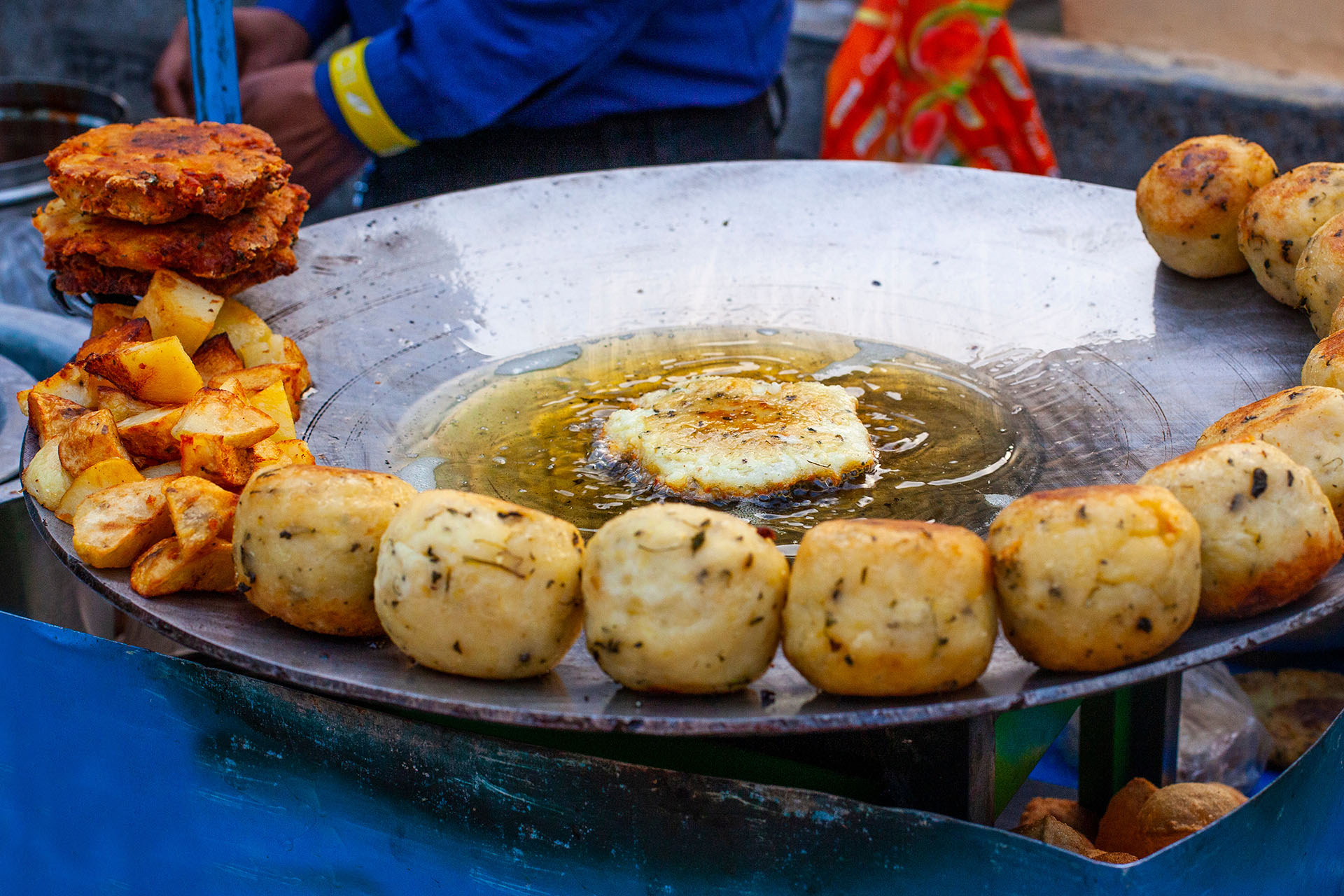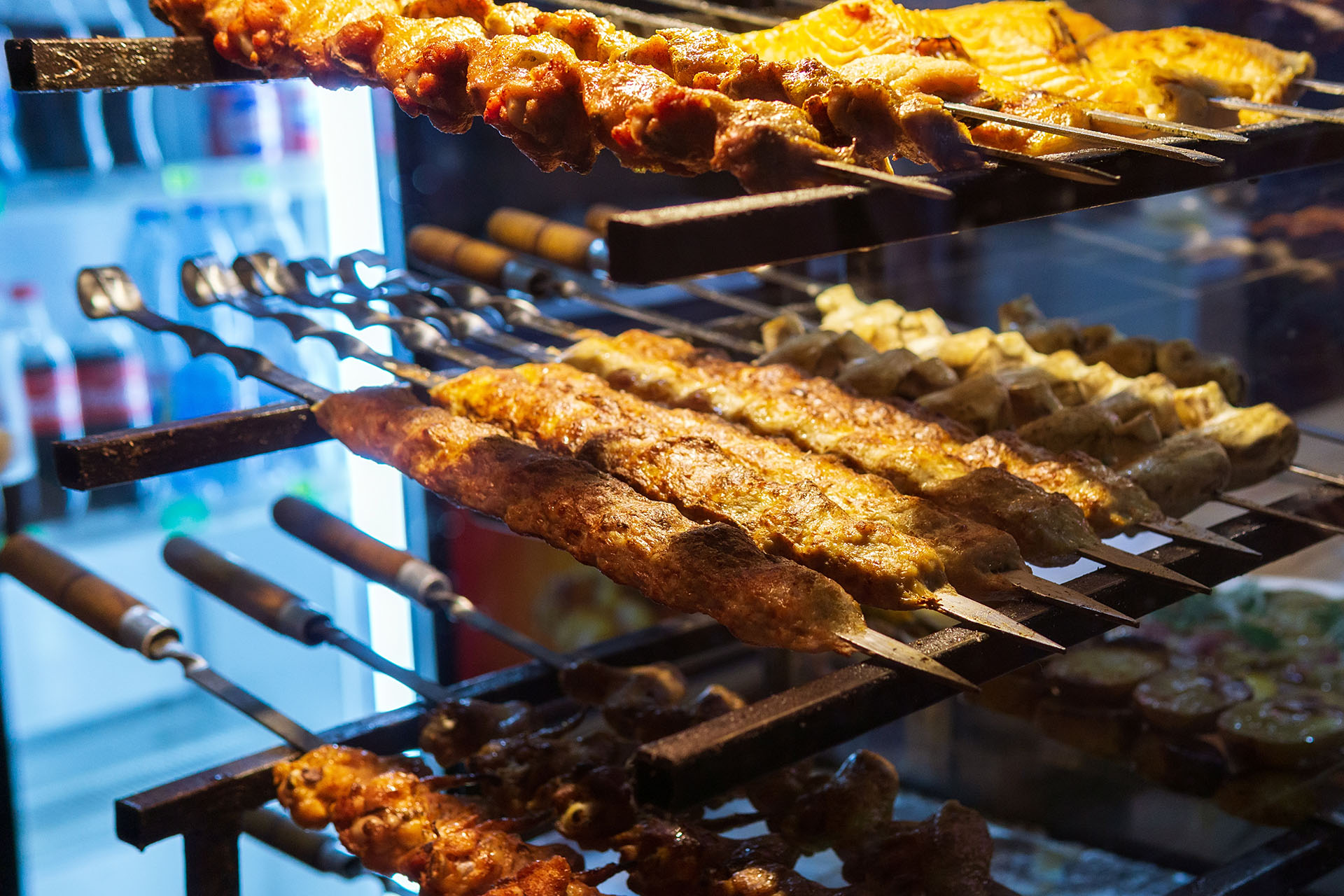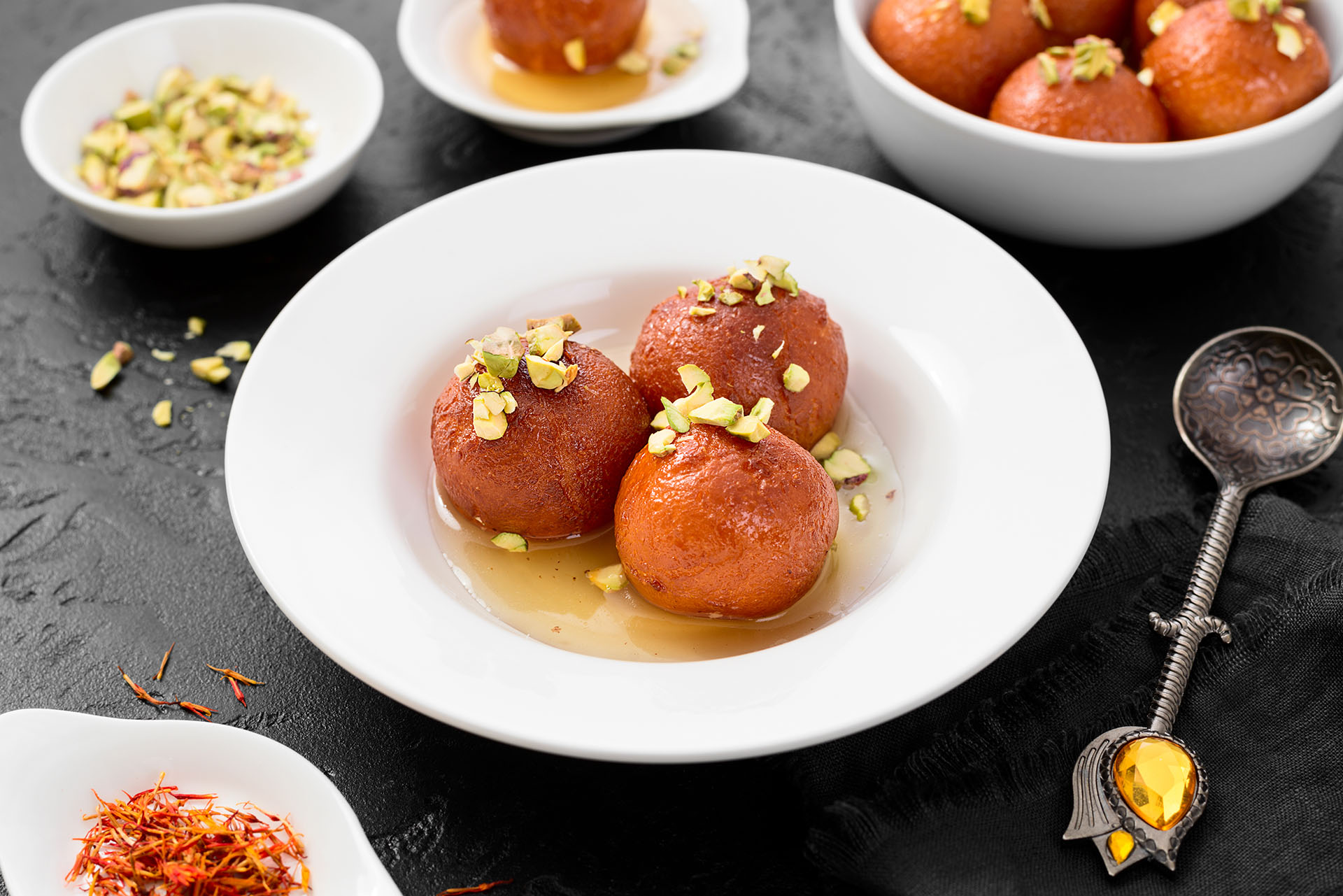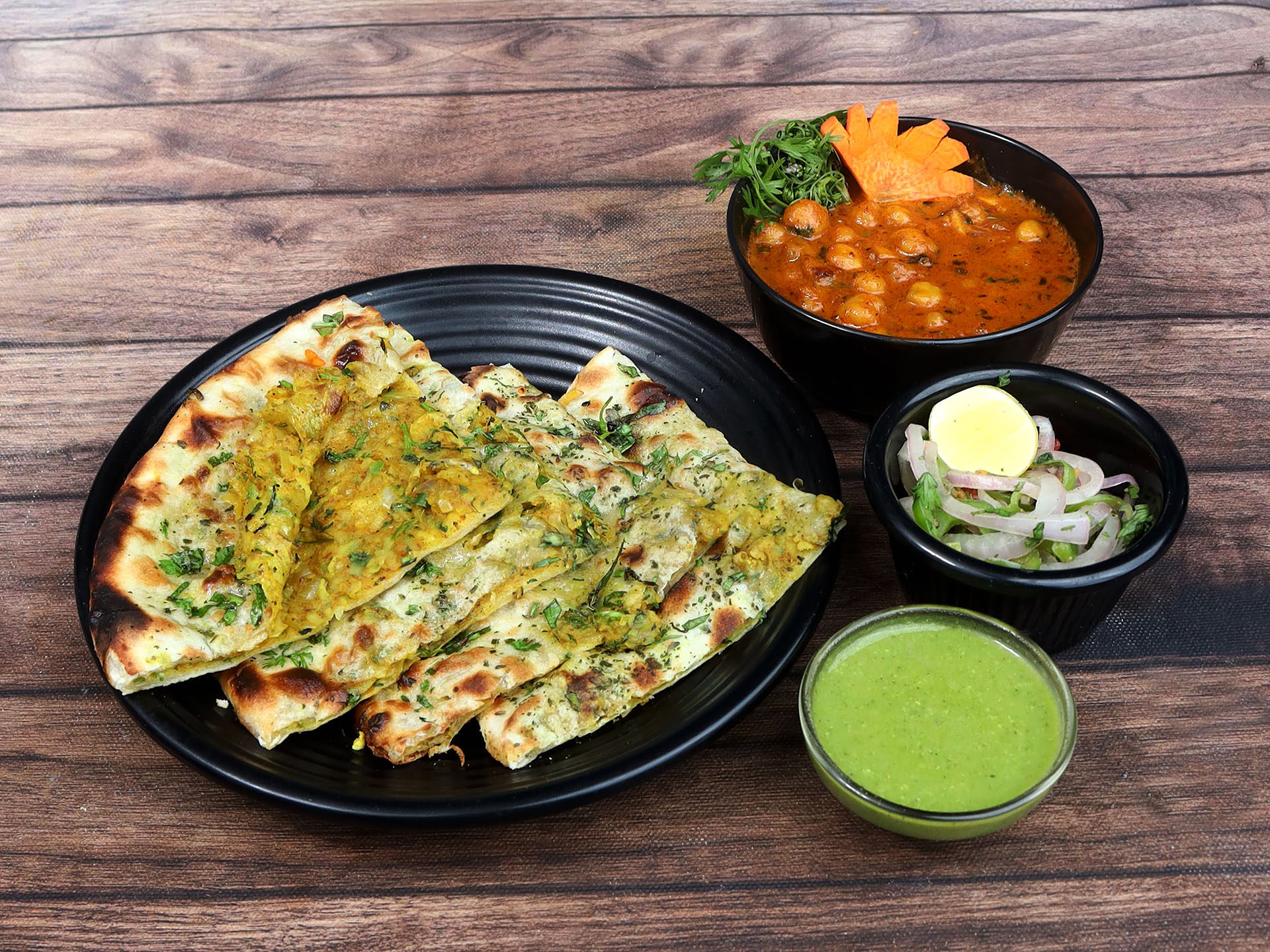Driving through India, the country’s cuisines, like its languages and customs, can change every half an hour. The Indian nation is an astounding assortment of topographies, religions and historical origins that inform the way its people eat. The variety of must-try dishes is on display in larger North Indian cities like Delhi, Amritsar, Lucknow and Varanasi.
There is always colour and texture to North Indian cuisines. Take qormas – thick, rich curries made of meat and flavoured with an assortment of spices; or flatbreads like, roomali roti, which is made thin as a handkerchief to be wrapped around kebabs, and kulchas, which are stuffed, baked and served with zesty sides. Its dishes are laden with spicy chutneys as additions, elements of crunch, and other techniques that speak to the varied and wide histories of the region.
Eating though North India is a journey of constant adventure, and may not be for the faint-hearted, as it demands will and exploration. It is, however, somewhere every true food traveller should have on their must-try culinary map. Follow crowds in bustling street corners, and visit beloved city icons to eat dishes devised in kings’ courts. In this tightly packed, theatrical part of India, there is something for everyone.
1. Chaat
The origins of chaat remain debated, but many conclude that when 16th-century Delhi saw an epidemic of cholera, its emperor, Shahjahan (popularly known for building the Taj Mahal) ordained his cooks to prepare spicy, tangy dishes that could kill the bacteria that was spreading. Chaat is not a dish, but a spectrum of Indian cuisine in which every plate, and every recipe is subject to the whims and imaginations of its cooks.
Many say the name Chaat, which literally translates to “lick”, derives from the delicious recipes that cooks of the North-Indian kingdoms concocted, which left customers licking their fingers and bowls when they ate these inventive creations. Chaat is always eaten on the street – and different cities, districts and neighbourhoods have distinct chaat varieties to their name. Like in Delhi, “aloo tikki” is beloved – in which flat discs of potatoes and lentils are fried, and topped with fresh sauces.
In Varanasi, meanwhile, palak chaak, in which fried spinach leaves are topped with zesty toppings, tells tales of the city’s culinary prowess.
Where to try: The best way to eat chaat is to wander, and follow throngs of locals in the old quarters of cities, but if in Delhi, head to the old city’s Natraj Dahi Bhalle for some of the city’s best offerings, and in Varanasi, Deena Chaat Bhandar and Kashi Chaat Bhandar in the city’s winding lanes will leave little else to desire after you are done.

2. Kebab
Kebabs – dishes that consist of skewered meat on a grill – were first brought to the country by incoming populations of Turkish traders, and Persianate kings. The recipes consist of different variations of spices, herbs and other softeners like yoghurt and cream. Kebabs are made by shaping the meat and grilling them in large tandoors – massive metal grills that operate on coals.
Kebabs are, as everything in Indian cuisine, of endless types. Take the reshmi kebab, which instructs that pieces of chicken must be marinated in cream and grilled so they are finally as soft as “resham” or silk. Another option is the simple seekh kebab, in which minced and spiced chicken (or mutton meat) are moulded into tubular shapes and eaten with handkerchief like rotis for a quick, filling meal.
Where to try: In Lucknow, the Tunday Kebab – a soft, melt-in-the-mouth kebab made with beef or mutton meat that was devised for a toothless king is a citywide legend and can be found at its namesake restaurant, Tunday Kababi. In Delhi, the neighbourhood of Nizamuddin is home to the city’s most renowned sufi-shrine, and kebab restaurant named Ghalib Kabab Corner — both of which exhibit the city’s layered cuisine and history.

3. Gulab Jamun
Indulgence has its best form in this popular North Indian dessert. Gulab Jamun originates from the Arabic dessert Luqmat-Al-Qadi and is a soft, melt-in-your-mouth treat made from fried dumplings made of thickened milk. After they are fried, the round, sugary sweets are coated with rose-flavoured sugar syrup, and garnished with powdered pistachios and served warm. While perfect for the winters, Gulab Jamun is eaten all year round by delighted children and sneaky adults.
Where to try: These are available at most sweet shops in North Indian cities, but the most famous are at Chaina Ram Confectioners in Chandni Chowk, Old Delhi; and at Kesar Da Dhaba in Chowk Passian, Amritsar.

4. Kulcha
The conception of Indian food has finally expanded beyond its most obvious formulations of chicken tikka masala and naan. This is what brings us to the Kulcha, native to Amritsar, Punjab. Kulcha is a stuffed bread made with flour in a large coal-fired tandoor, or on an iron-pan over a stove. Unlike naan, kulcha is a layered, flaky flatbread, and can contain pastry-like folds that are laden with ghee, made with cow’s milk, and also fillings of onions, potatoes and paneer.
In Amritsar, the kulcha is beloved, and served with onions, mint chutney, raitas or yoghurt-based preparations, and a “chhole” which is a spiced curry of chickpeas on the side. The bread is a perfect breakfast or lunch, but remember that kulchas are best eaten in the day, as they are a hearty meal that match their origin city Amritsar’s robust and resilient spirit.
Where to try: In Amritsar, kulchas are abundantly available, but a few recommendations include: Ashok Kulche Vala at Ranjit Avenue; or Brothers Dhaba, at Golden Temple road near the city’s most visited, and wondrous temple. In Delhi, a good Amritsari kulcha can be found at a restaurant named Prem Di Hatti, in the city’s West, which makes an assortment of the dish.

5. Lassi
This Indian beverage, varied in form and flavour is often unfairly reduced to its one, mostly consumed form of “mango lassi”. Here, the yoghurt is set with artificial flavourings and sweetened with sugar before it is served. But a good lassi is about the quality and freshness of its milk, the way the yoghurt is churned, and set in large clay pots before it is served.
An industrially made lassi has nothing on a tall, frothy glass made in one of India’s oldest and finest lassi shops. Lassis can be salty – as accompaniments to meals, where the drink is garnished with freshly ground cumin, or other house spices. They can also be luxurious and sweet, where they are thickened, sweetened, and flavoured with saffron, set with beautifully cut nuts. (Disclaimer, sweet lassis can be entire meals in themselves).
Where to try: In Varanasi, Pehalwan Lassi is a treat fit for a king. Each glass of lassi is churned for hours, before it is infused with rabdi – a pudding-like sweet made by reducing fresh, creamy milk, and topped with fragrant spices and almonds.

[sk_quiz]
Please check the establishments’ respective websites for opening hours as well as booking requirements before visiting, and remember to adhere to safe-distancing measures while out and about.
The information is accurate as of press time. For the latest travel advisory updates, please refer to the Ministry of Foreign Affairs’ website.
To learn more about Singapore Airlines flights to India, visit singaporeair.com. To join us in protecting the environment by offsetting your carbon emissions on your future flights, visit the following websites to learn more: carbonoffset.singaporeair.com.sg and carbonoffset.flyscoot.com
The post A food tour of North India’s legendary regional cuisines appeared first on SilverKris.
from SilverKris
No comments:
Post a Comment